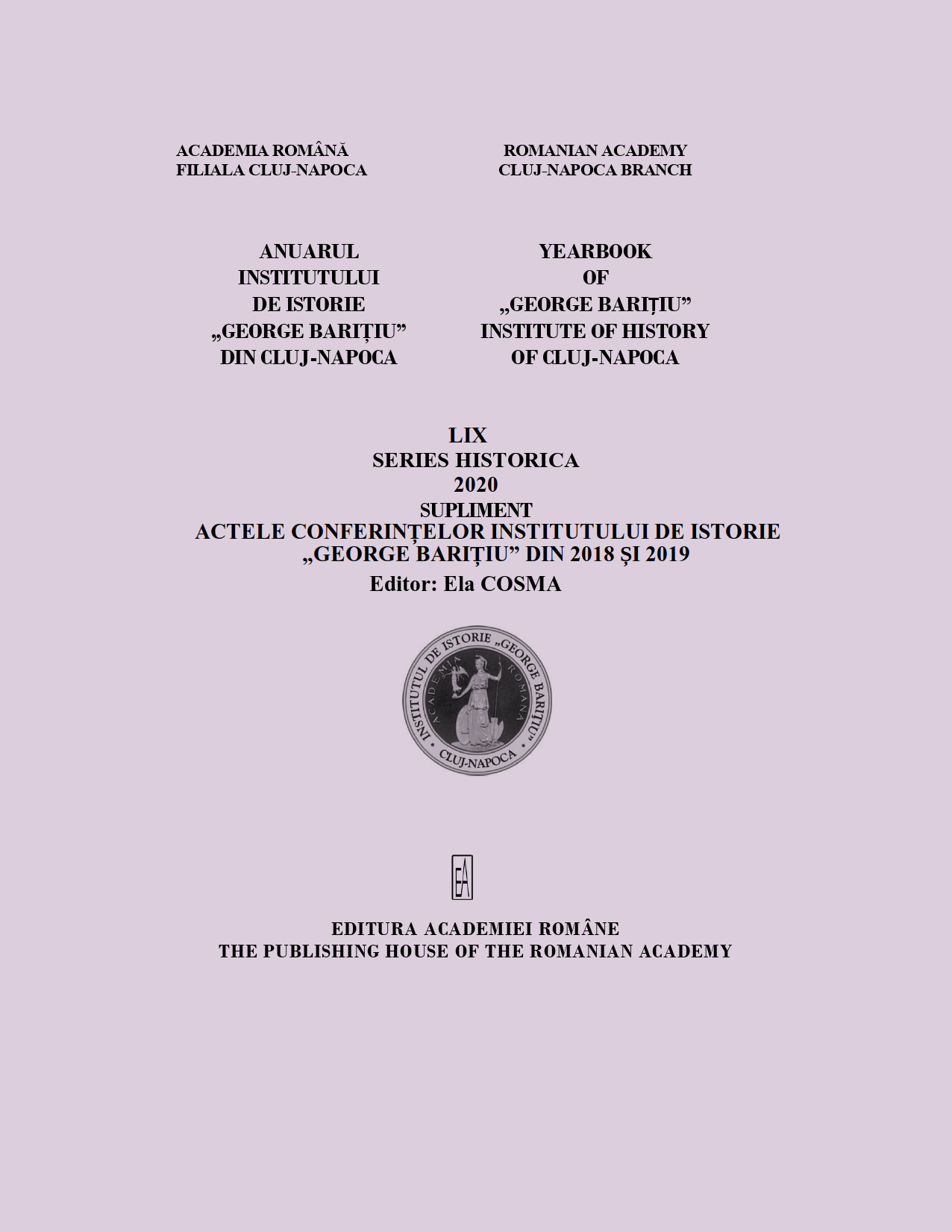Războaiele uitate ale românilor la 1848-1849
The Forgotten Wars of the Romanians in 1848-1849
Author(s): Ela CosmaSubject(s): Local History / Microhistory, Military history, 19th Century
Published by: Editura Academiei Române
Keywords: Romanian revolutions of 1848-1849; national defence war; armed resistance; Romanian Lands;
Summary/Abstract: Historiography has traditionally described the revolutions of 1848 in the Romanian Lands especially as reflecting the programmes shaped by Transylvanian, Wallachian and Moldavian revolutionaries. While Russian historiography denies the existence of a Romanian 1848 revolution by itself, Hungarian historiography calls it a counter-revolution. Meanwhile, insisting on the obvious programmatic unity of the 1848 revolutions in all Romanian territories (but constantly forgetting blind spots like Bessarabia, Bukovina, Serbian Banat), our historiography paid almost no attention to other main aspects. Thus, the military component of the Romanians’ revolutions was neglected, because of either scientific reasons (e.g. the lack of preoccupation and a few edited military documents) or non-scientific reasons (political correctness in hiding armed conflicts, praising the peoples’ brotherhood after World War II, sparing the sensibilities of the mentioned historiographies). Even a classic one year war – the national defence war fought in the Western Carpathians by Avram Iancu’s folk army legions between summer 1848 and summer 1849 – was undermined right after the joint Habsburg-Tsarist victory in August 1849, in order to turn down the justified claims of the real defenders, the Romanians, and to ensure the Austrian restauration in Transylvania. Not complete is the description of military operations performed by the second Romanian border regiment in North Transylvania, Bukovina and Maramureş; less researched are the first border regiment in South Transylvania and the Banat Romanian border regiment. As war casualties among the Romanian civilians in Transylvania and Banat reached tens of thousands during 1848-1849, present historians try to establish mortality rate and demographical effects of the mid-19th century revolution and war, including refugees and population displacements. In Wallachia, historiography admits small-sized war episodes, as Gheorghe Magheru’s armed resistance in Oltenia; the Dealu Spirii battle on 13 September 1848. We lack approaches tackling Wallachian peasant uprisings linked with the activity of the revolutionary commissionnaries; riots of the urban population; massive Russian penalties and arrests of Romanian subjects; the Romanian militia’s partition after the Russian-Turkish occupation of the country (September 1848 – September 1850). In Moldavia, the first Romanian revolution started on 27 March 1848 was followed by exemplary arrests enforced by local repression troops. As Moldavia also suffered Russia’s first invasion (June 1848) and longest occupation (July 1848-October 1850), inner opposition was apparently impossible, so historiography focused on the outstanding emigration. Nevertheless new archive testimonies prove the Romanian armed resistance on Moldavian soil, connected with the Polish South Legion’s organization, and unfold the planned Romanian armed insurrection in Moldavia (June-September 1848). Tsarist sources denounced: the fight for independence and national unity of the Moldavians; their armed efforts aimed at removing the Russians; arms trafficking in Moldavia; armed forces of mountain inhabitants and hunters concentrated in the Curvature Carpathians; the training camp in Grozeşti (Oituz); the guerrilla fighters in the Ploşniţa mountain beating off the Cossacks. In April-September 1848, highpoint of the Romanian-Polish military collaboration was the South Legion of the Polish Republic, sustained by Romanian logistics and manpower, with operational basis in Grozeşti and military deployment in southern Moldavia and north-eastern Wallachia.
Journal: Anuarul Institutului de Istorie »George Bariţiu« - Series HISTORICA - Supliment
- Issue Year: LIX/2020
- Issue No: LIX/Sup
- Page Range: 11-20
- Page Count: 10
- Language: Romanian

